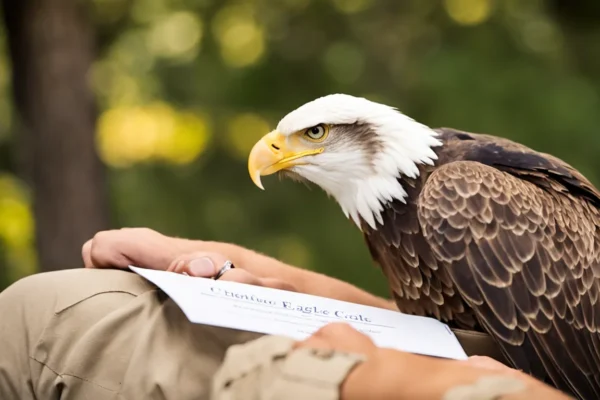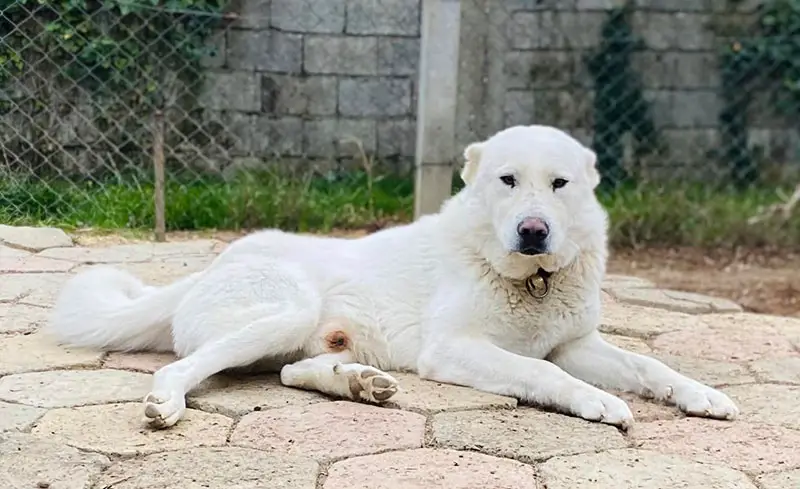Owls are solitary animals. To be honest, it would be quite rare to see an owl in the wild—your best chance is to hear their characteristic hoot!
Even less probable would be seeing a baby owl, which is why we’ve put together this post with all the information you need on baby owls and plenty of adorable baby owl photos.
What is the appearance of a baby owl?
The majority of newborn owls are very plump, with thick layers of white or gray down covering them. Their heads are fashioned like hearts, and their eyes are usually round, with black buttons. A beak that is like a hook emerges from the fluff. Additionally, young owls have a noticeable egg tooth, which is a sharp protrusion from their beak that enables them to crack open the egg during hatching. These vanish after hatching in about a week.
Certain newborn owls do have an unusual appearance, particularly Barn owls, whose long faces stand out against their fluffy white bodies.
What size are owl babies?
Considering how big some of these birds may become, the owlets of even the biggest owls—the Great Horned, Snowy, and Eurasian Eagle owls—are very few. For example, snowy owl chicks are just 6.5cm (2.5in) tall. When fully developed, their height is around 2.5 feet!
Great Horned owls, which are only around 3 inches tall at birth, have a similar tale to tell. Though they are among the tiniest and most defenseless of all young birds, owl chicks develop at an incredible pace. This indicates that the first few days of life are crucial for long-term survival, as is common for predatory birds.
What is the weight of an owl baby?
Even huge owl species will only give birth to chicks weighing between 40 and 60 grams (2 oz). In contrast, a typical chicken chick may weigh around 30g, and a duckling, about 50g. Babies of the Great Horned Owl weigh only around 35g or 1.2 oz. Owllets are often quite little animals!
The Elf and Pygmy owls, two of the tiniest owl species on Earth, weigh a combined 40g (1.5 oz) at maturity, and their young weigh a mere 4g (0.14 oz)! They hardly surpass the size of a bumblebee.

What appearance do young owls have?
Owl chicks gain weight and develop rapidly throughout their first month. Owllets may easily quadruple in weight between days 14 and 28, with flatter, more prominent faces throughout this time. The Great Horned Owl weighs just 35 grams (1.2 oz) at birth, but in about a month, it grows to 800 grams (28 oz)!
The down will last for at least two months, but the thick, fluffy down starts to give way to more characteristic adult feathers. After around 14 weeks, juvenile owls will probably start to resemble adult owls, however they may leave the nest before they have lost all of their baby feathers.
What’s the name of an owl chick?
When an owl is still in its fluffy down and has not yet grown feathers or adult plumage, it is referred to as an owlet.
What’s the name of a litter of young owls?
It’s unusual enough to witness a group of owls at a parliament or congress, but it’s much more unusual to see a group of young owls in the wild.
Generally speaking, owls produce modest clutches of four to six eggs, however depending on the season, certain species may lay as few as one to three or as many as ten or twelve. Generally speaking, owls build tiny, covert nests with just a few eggs, and the young leave the nest after one to three months to become independent. Seeing newborn owls together, even from the same nest, is very rare for this reason.
Do owl chicks gather in groups?
The owlets of several married owl pairs flocking together is very improbable. It is true that owls spend much of their lives alone; in fact, they prefer to withdraw within their monogamous partnerships.
Certain species, like the Tawny and Burrowing owls, may live in small groups and flock together for at least part of the year, thus owlets may spend some time socializing with individuals outside of their families. Generally speaking, after little more than 12 weeks in the nest, newborn owls become quite independent.
What feeds owl babies?
Owls are mostly carnivorous, which means they only eat meat. While smaller owls are more likely to feed on insects, arthropods, and small rodents, larger owls consume mostly fish, birds, reptiles, and mammals.
Owl babies consume whatever food their parents give them. Food will be torn into tiny pieces so the owlets may eat it whole.
How are owl babies taught to hunt?
Young owls hunt purely out of instinct and have very little training or direction. Once they leave the nest, young owls must go on their own hunts.
What appearance do owl eggs have?
Typically, owl eggs are completely white and lack any distinctive markings. Compared to other owl species, some lay much more glossy and lustrous eggs (e.g. the Tawny owl).
For what length of time do owl eggs hatch?
Many owl species have eggs that hatch in around 30 to 35 days. For instance, it takes 31 to 33 days for the eggs of the Snowy, Little, and Barn owls to hatch. It might take an eagle owl egg 35 days to hatch. For all owl species together, thirty-two days looks like an acceptable average. This is also about average for all predatory birds.
Owls lay eggs when?
Usually in the spring, no earlier than March, owls lay their eggs. Certain owl species, like the uncommon Blakiston’s fish owl, may miss a year altogether if the winter is very hard and they are unable to find enough food to lay eggs.
It is well known that some species, like the Barred and Great Horned owls, lay their eggs very early in the year—sometimes even in January and February during the middle of winter. Owls can successfully incubate eggs at outdoor temperatures as low as -35°F (-37°C). These eggs are incubated at very low temperatures.
When food is in short supply, the female may hunt with the male, leaving the eggs unguarded in the bitter cold.
How do owls take care of their young?
During the first few weeks of the owlet’s life, the male usually assumes the job of the hunter, bringing food to feed both the female and the owlet. This meal will be torn to small bits by the female so that the chick may eat it whole. Owlets develop very fast and can soon eat the same foods as their parents.
Since they are the biggest and strongest in the nest, the older chicks are often fed first; if food is short, this might even result in the tiniest and most recent chicks starving.
When are newborn owls able to fly?
Some species, like the Great Horned owl, may take up to 2.5 months for their owlets to be ready to fly, while other species, like the screech owl, can have their young ready in little over a month. Like many other predatory birds, owls grow swiftly and are “born ready,” learning to fly and hunt by instinct rather than by observing their parents. The rapidity with which owl chicks shed their parental guidance sets them apart from other species.
When do owl babies depart from their nests?
Compared to other bird species, baby owls abandon their nests quite quickly; some leave the nest in as little as four weeks. Some species of owls, including Barn owl owlets, may spend up to 10 weeks with their parents in their nests. Compared to other birds, who often spend at least the rest of the spring and summer with their parents, this is still a rather swift shift.
Do Owls reuse their nests?
Owls are not known for being good at constructing nests, thus most of their nests are too small to be reused.
Rather, owls are often opportunistic nesters who will take a risk in building a nest in any area that is suitably safe. If given the option, they will choose to nest in tree hollows or abandoned buildings rather than creating much of a nest. They’re also quite good at taking over other birds’ breeding locations.
How much time do owl babies spend with their parents?
It might be as little as one month that young owls spend with their parents. Predatory birds often do this because they quickly grow away from their parents and create their own territories before the next winter arrives.
Do owls abandon their young?
Owl parents are committed to their young, even if the change from an owlet to an owl seems to happen quickly. If they are touched by people, they won’t give up on them, and if other predators visit their nest, they won’t give up easily either.
What makes owl babies sleep with their heads lowered?
It’s been noted that some young owls like to sleep with their heads tipped down toward the ground in a slightly crumpled posture. This is because, during the first few days of their life, their big, heavy heads are practically too big for them to hold up!





